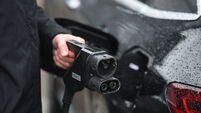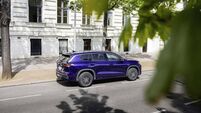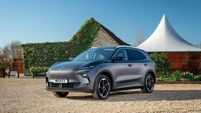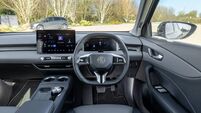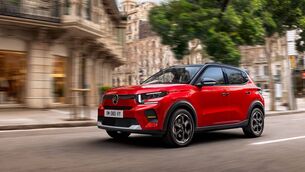Cupra Tavascan review: Is this the best electric SUV you’ve never heard of?

The all-new Cupra Tavascan
|
CUPRA TAVASCAN |
|
|---|---|
|
|
★★★★☆ |
|
|
from €45,365 - €55,765 as tested |
|
|
a 210-kW electric motor churning out 286bhp |
|
Range |
Claimed: 546km Actual: 500km |
|
|
top quality all around — tech especially — but the interior plastics let things down |
|
|
Cupra will be a ‘name’ in due course, but right now not enough people know about it |
Brand recognition is a vital component of any manufacturer’s raison d’etre and the motoring sphere is no different from any other endeavour where selling to Joe and Jane Public is essential to success.
But if Jane and Joe have no idea about your product line-up, then you’re in a spot of bother. For Cupra, the SEAT sub-brand for which the parent Volkswagen Group has lofty ideas, that’s a big issue right now.
Factor in the intention of its VW masters to launch Cupra as a standalone marque to the US within the next decade, then brand recognition becomes altogether more important for those charged with making it a success.
As we have pointed out on numerous occasions when writing about this excellent new brand, this lack of public awareness about the marque and its products is both bewildering and dumb. If you’re not out there pushing the metal, then the metal is not going to sell itself.
And the thing is that Cupra does have a lot to say about itself – excellent model line-up, competitive pricing and individual product which is as good as if not better than that of the parent company.
Indeed – and it has been obvious for some time – that subsidiary companies such as Skoda, SEAT and now Cupra are if not necessarily leaving equivalent VW products looking dull and uninspired by comparison with what they are making, then they are certainly making better cars.
But, the reason why Cupra – with its ‘four-legged spider’ logo and copper-coloured body inserts and alloy wheels – has come into existence is, in reality, because the powers that be in Wolfsburg realised that it was probably going to be impossible to change the brand perception that accompanies the SEAT brand.
Sadly, the Spanish marque, has always been associated with the lower end of the market and no end of brand manipulation was going to change that perception. So, what to do?
Well, the easy answer was simply to reinvent it. Cupra is that reinvention. Oddly, though, what has emerged is something that will potentially challenge the VW badge itself and it will be interesting in the years to come to see how Wolfsburg copes with that challenge.
But enough waffle. The Tavascan is named, like all SEAT and Cupra models, after towns or locations across Spain (in this case a small village in the heart of the Pyrenees, near the border with France). It is solely an EV, like its sibling the Born, and it is Cupra’s stab at that most awful of automotive segments, a Coupe SUV.
In fairness, looking at it, it does not immediately come across as one of those terrible, but more like a simply sleek SUV. It is a good-looking thing and your eye is caught more by its body curves than the heavily sloped roof, which isn’t that heavily sloped really.
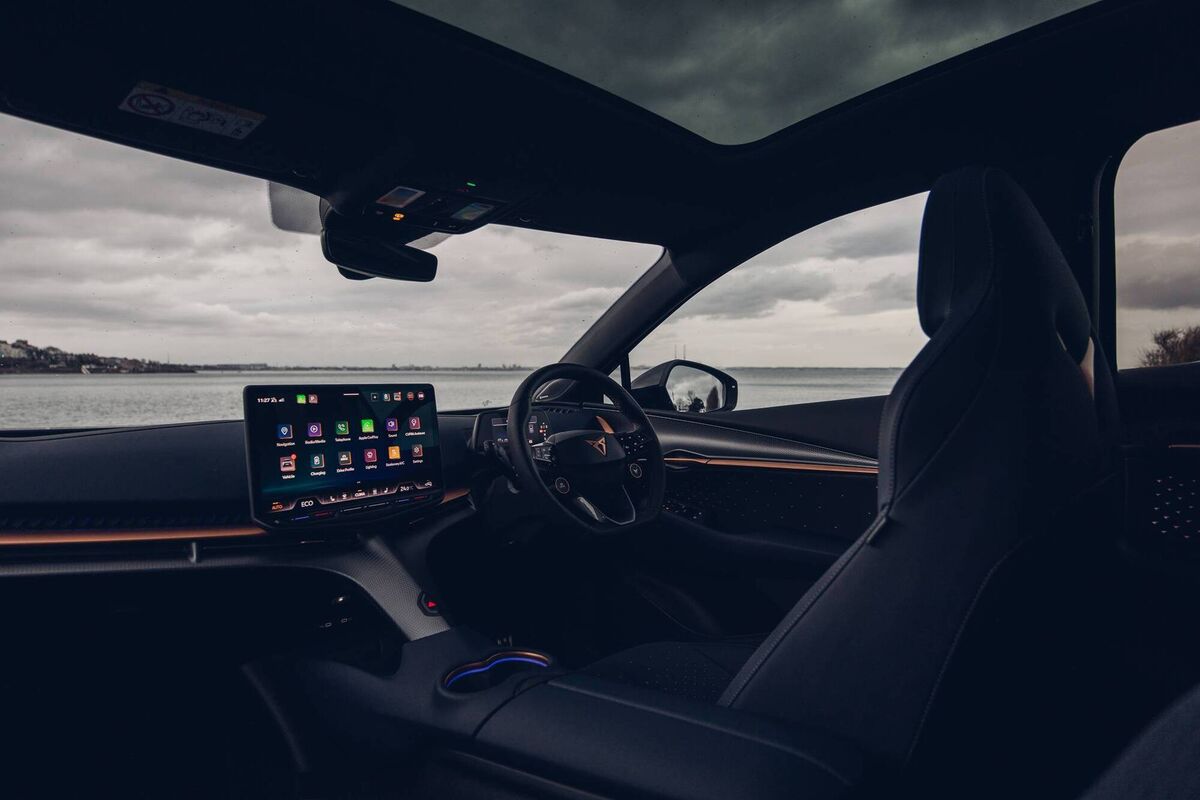
There is an element of drama about the car’s appearance and its looks purposeful and modern, despite the fact the designers have relied heavily on older design tropes (clam-shell-y bonnet, Avant Garde light clusters front and rear), fat wheel arches and swoopy creases and folds along the flanks).
The interior too dares to be different and is, nominally, a feast for the eyes. There’s a unique Y-shaped element which emerges from the centre console between the front seats and melds into the dash and creates a futuristic vibe. On the one hand, this design's adventurousness is daring and different; on the other, it is let down by the materials used to create it, but more of that later.
Passenger space is very generous — especially for those in the rear where neither head or leg room are compromised by the supposed ‘coupe’ look or the panoramic roof — and the boot is huge too.
The one caveat is that the materials used – despite plenty of eye-catching copper inserts – don’t feel as premium as they might. They are too hard and scratchy for the premium feel that is being sought here.
Otherwise, the seats are fantastically comfortable and the tech levels – including the huge 15” touchscreen – are very impressive, although we would have liked a non-integrated climate system and button controls for same. But stuff like the Sennheiser stereo system also adds heft to the package.
Driving it, however, is where its winning character comes into play – it’s a hoot. Now, that’s not something we’ve often said about EVs; sure, some of them are light-switch fast, but most don’t have the handling nous necessary to make that palatable. This one does.
The engineers have done a thorough job on the front and rear suspensions – MacPherson struts at the front and multi-link rear setups – have been finely calibrated and it shows. This thing handles like the sporty entity Cupra wanted it to be and not like your regular sloppy mid-sized SUV.
With the steering having been specially engineered to provide more driver feel and engagement and, allied with the suspension tuning, the Tavascan packs the necessary ride and handling punch to please even the most demanding driver.
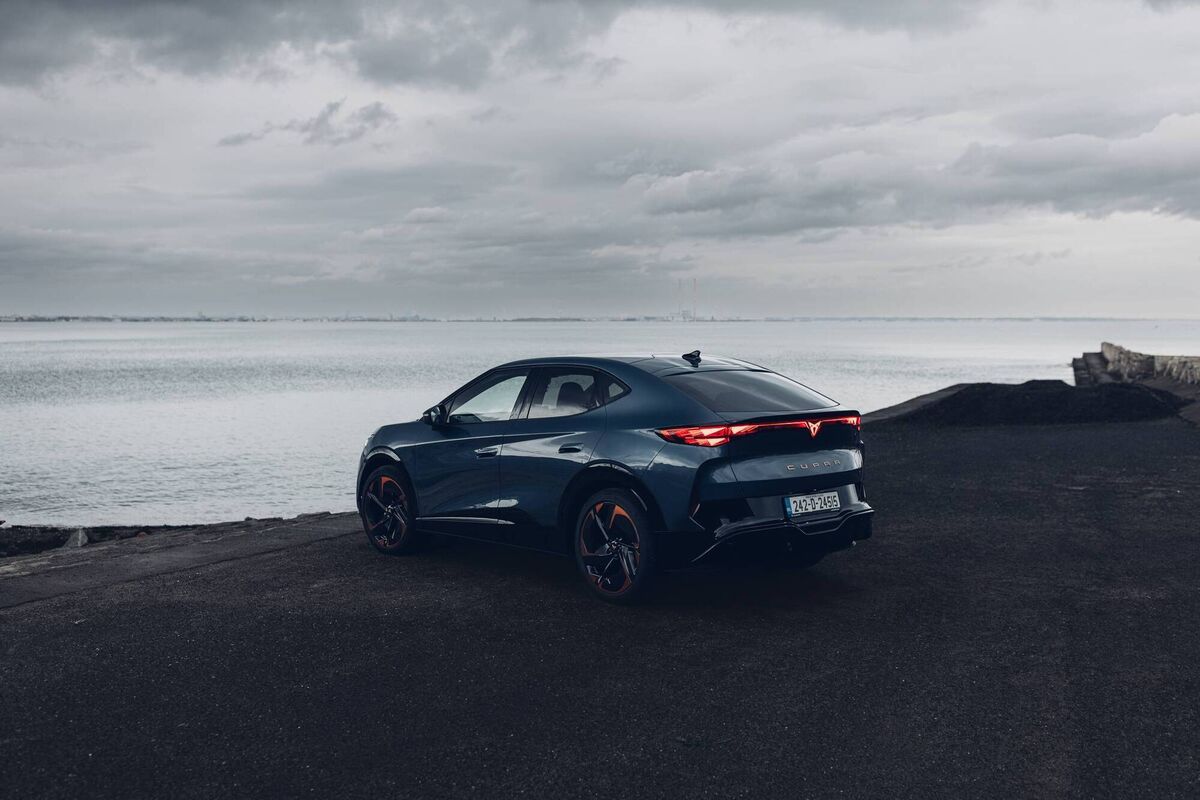
Work has also been done to give heft to the braking system – something we found to be wanting on the recently reviewed Born. Here, they are reassuringly responsive and do their job well.
Add that to 286 bhp whack coming from the 210-kW electric motor – powering the rear wheels – on our ‘Endurance 6’ specced model and you have something very engaging indeed – much moreso than either the excellent Skoda Enyaq or the disappointing Volkswagen ID.3.
There are, of course, a choice of driving modes – and you even get a ‘Cupra’ button t-on the steering wheel which promises more grunt but doesn’t really deliver much. As is so often with EVs these days, you’re best off sticking it in ‘comfort’ mode and leaving it at that.
But then you’ve got the Tavascan’s range and re-charging prowess, both of which are impressive. The official range is 546km, but you can feel certain you’ll get close to 500 km at least without being overly careful, while the 20-80% charging takes about half-an-hour.
So far, so good. So, what are the downsides? Well, this car is actually made in China and therefore subject to EU tariffs introduced last year – even before ‘Tariff’ Trump swung into action. That makes it quite an expensive car for the mid-size SUV segment, but we can expect to see some inventive sales pitches here to soften that blow somewhat.
The other downside is the quality of the interior materials; for a supposedly premium vehicle, they’re just not up to the job and detract from what is an otherwise excellent package.
Once more with a Cupra product, we have something here which is tantalisingly close to being a five-star product but falls just shy. That they’re getting so close to excellence promises much for the brand and its future.
This ‘experiment’ gets more interesting by the day – now all they need is for the general public to actually know and understand what they’re up to.


